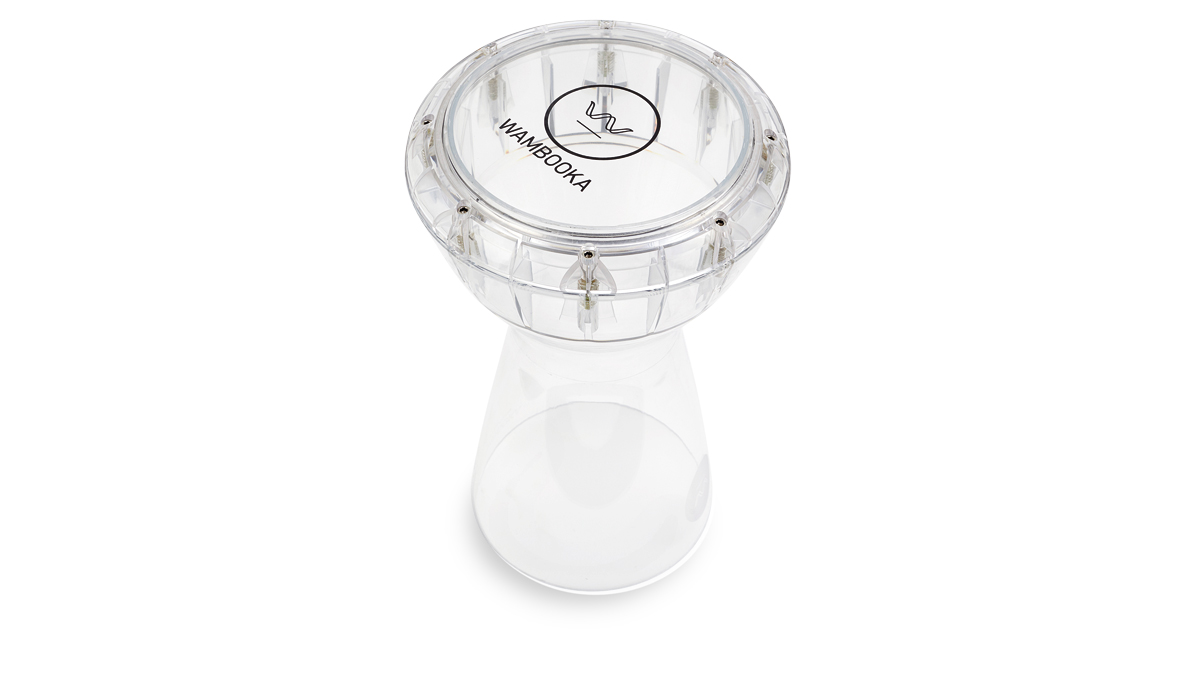MusicRadar Verdict
Who knew that by adding water to a drum you could add a whole new dimension to a traditional instrument?
Pros
- +
Something truly different. Sounds great.
Cons
- -
Won't be for all.
MusicRadar's got your back
Handel aside, water and music don't usually mix.
Moon famously filled one of his acrylic floor toms with goldfish, but good old H2O doesn't usually feature uppermost when considering how to design a new instrument.
The Wambooka takes a traditional-style darbouka drum and hydrates it, to surprising effect.
The darbuka (or doumbek) is a type of single-headed drum originally from North and East Africa but that's spread across the world. The shell of the drum can be either wood or ceramic, or in modern versions of course, plastic.
Traditional darbukas had a single head made from animal hide, but recently the modern interpretations feature a mylar batter head which can be tuned using a drum key.
Build
The Wambooka is constructed in the style of a traditional darbuka, with a flared base that tapers to a thin waist, which then curves out to form the bowl and the edges on which the head is placed. Most striking about the Wambooka is that it appears to be made from glass - actually it's a clear acrylic plastic, but the whole shell of the instrument is created from it, including the hoop.
The body of the Wambooka is a one- piece solid body, and with the clear head and hoop it looks almost crystalline. The Wambooka comes with a custom neoprene bag that fits it perfectly, and zips up the side and around the head, and features a shoulder strap for carrying.
Hands On
The traditional way to play a darbouka is with it wedged under your arm, with your forearm resting longitudinally with the wrist floating above the edge of the batter, and the other arm free to play the head.
Different types of strike cause different notes - for example, striking the centre of the head with the fingers gives a bass tone and striking close to the edge of the head with the flat of the fingers gives a high- pitched tone, and muting either stroke gives another.
The hard material of the drum means that even light strokes sound clearly, reverberating out of the sound chamber quickly.
So far, so darbuka. Where the Wambooka differs, though, is in its unique ability to contain water.
Now, bear with us; it's not often we advocate pouring water into test instruments, but add a pint or so to the open end of the Wambooka, and (making sure to keep the base tipped up beyond horizontal!) the water flows to the neck and head area.
The head is well-sealed so you don't get any leaks, and at first the water sloshes around, making you wonder what you're doing. That all changes when you strike the head though - the water damps part of the head and shell and as it moves around it causes eerie and unexpected sounds.
Deliberately wobble it when playing and all of a sudden you have a whole new vocabulary of sounds to play with. You can also play on the shell with your fingers, using the water to change the sound.
“I said, ‘Are we sure we can write a song about death?’”: The story of Mike + The Mechanics' classic No.1 The Living Years
“Without investment in music education our talent pipeline is at risk of drying up along with the huge opportunities for economic growth it brings”: UK Music draws up five point plan to “turbocharge” music education
“How daring to have a long intro before he’s even singing. It’s like psychedelic Mozart”: With The Rose Of Laura Nyro, Elton John and Brandi Carlile are paying tribute to both a 'forgotten' songwriter and the lost art of the long song intro










